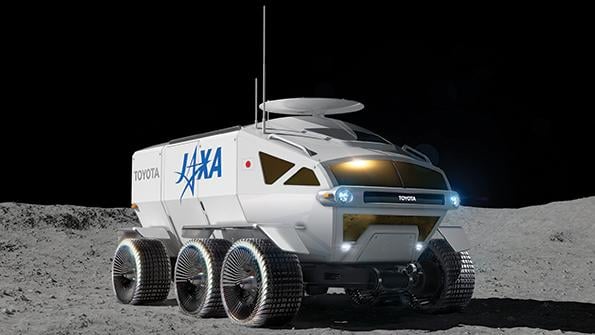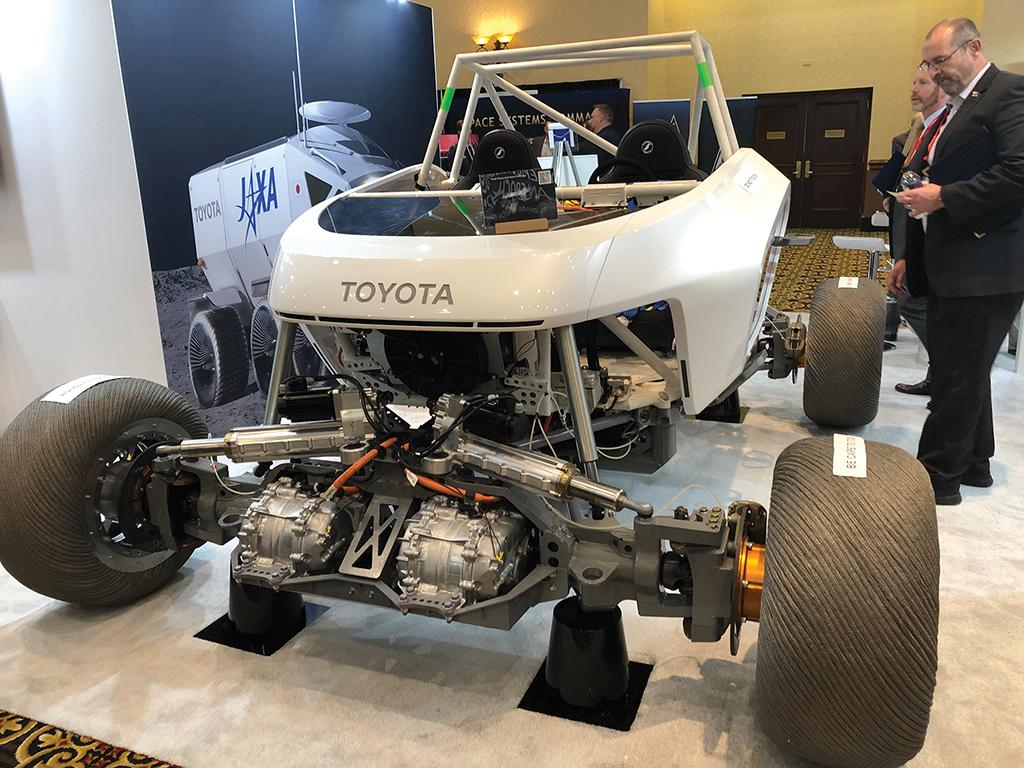
The Japan Aerospace Exploration Agency (JAXA) is working toward the launch this year of a small lunar rover that will pave the way for a large, follow-on pressurized crewed lunar vehicle due for deployment to the Moon at the end of the decade.
To be launched by SpaceX and carried to the lunar surface on Mission 1 (M1) of Tokyo-based Ispace’s Hakuto-R program, the small spherical rover is designed to split in half after landing. The two hemispheres will act as wheels, propelling the vehicle as it collects data on autonomous driving technology. The Japanese rover will be deployed to the lunar surface at the same time as another vehicle, the United Arab Emirates’ round, wheeled robot Rashid, which is intended to adapt its shape autonomously to suit the varying topography of the lunar terrain.
- Ispace rovers set for late 2022 launch
- Hydrogen fuel cell for JAXA-Toyota cruiser
In the longer term, JAXA and partner Toyota will incorporate lessons learned from M1 to develop the Lunar Cruiser—the first lunar vehicle designed to accommodate crew in a pressurized environment. Configured with a robotic arm to be developed by startup Gitai Japan, the vehicle will be powered by hydrogen fuel cells and have a range of 10,000 km (6,200 mi.); onboard power will be augmented by solar panels. “The rover will be used for missions to explore the Moon’s polar regions, with the aim of investigating the possibility of using the Moon’s resources,” JAXA says.

In the interim, Toyota has established a dedicated Lunar Exploration Mobility Works that, together with JAXA, has developed and tested a prototype rover. Displayed at the recent Space Symposium in Colorado, the vehicle is being used to lay foundations for the design, manufacture and evaluation of an engineering model of the Cruiser starting in 2024. This phase, which includes the design of the follow-on flight model, will begin to accelerate in 2027, when assembly of the Cruiser is due to commence.






Comments